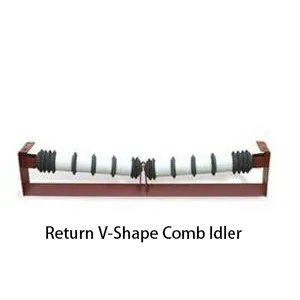 Afrikaans
Afrikaans  Albanian
Albanian  Amharic
Amharic  Arabic
Arabic  Armenian
Armenian  Azerbaijani
Azerbaijani  Basque
Basque  Belarusian
Belarusian  Bengali
Bengali  Bosnian
Bosnian  Bulgarian
Bulgarian  Catalan
Catalan  Cebuano
Cebuano  Corsican
Corsican  Croatian
Croatian  Czech
Czech  Danish
Danish  Dutch
Dutch  English
English  Esperanto
Esperanto  Estonian
Estonian  Finnish
Finnish  French
French  Frisian
Frisian  Galician
Galician  Georgian
Georgian  German
German  Greek
Greek  Gujarati
Gujarati  Haitian Creole
Haitian Creole  hausa
hausa  hawaiian
hawaiian  Hebrew
Hebrew  Hindi
Hindi  Miao
Miao  Hungarian
Hungarian  Icelandic
Icelandic  igbo
igbo  Indonesian
Indonesian  irish
irish  Italian
Italian  Japanese
Japanese  Javanese
Javanese  Kannada
Kannada  kazakh
kazakh  Khmer
Khmer  Rwandese
Rwandese  Korean
Korean  Kurdish
Kurdish  Kyrgyz
Kyrgyz  Lao
Lao  Latin
Latin  Latvian
Latvian  Lithuanian
Lithuanian  Luxembourgish
Luxembourgish  Macedonian
Macedonian  Malgashi
Malgashi  Malay
Malay  Malayalam
Malayalam  Maltese
Maltese  Maori
Maori  Marathi
Marathi  Mongolian
Mongolian  Myanmar
Myanmar  Nepali
Nepali  Norwegian
Norwegian  Norwegian
Norwegian  Occitan
Occitan  Pashto
Pashto  Persian
Persian  Polish
Polish  Portuguese
Portuguese  Punjabi
Punjabi  Romanian
Romanian  Russian
Russian  Samoan
Samoan  Scottish Gaelic
Scottish Gaelic  Serbian
Serbian  Sesotho
Sesotho  Shona
Shona  Sindhi
Sindhi  Sinhala
Sinhala  Slovak
Slovak  Slovenian
Slovenian  Somali
Somali  Spanish
Spanish  Sundanese
Sundanese  Swahili
Swahili  Swedish
Swedish  Tagalog
Tagalog  Tajik
Tajik  Tamil
Tamil  Tatar
Tatar  Telugu
Telugu  Thai
Thai  Turkish
Turkish  Turkmen
Turkmen  Ukrainian
Ukrainian  Urdu
Urdu  Uighur
Uighur  Uzbek
Uzbek  Vietnamese
Vietnamese  Welsh
Welsh  Bantu
Bantu  Yiddish
Yiddish  Yoruba
Yoruba  Zulu
Zulu Jan . 14, 2025 11:55
Back to list
Driving Pulley
Pulleys are integral components in belt conveyors, crucial for various industries including mining, manufacturing, and logistics. Understanding the different types of pulleys used in these systems can enhance operational efficiency, improve product longevity, and ensure safety standards are met. Here, we delve into the specific types of pulleys employed in belt conveyors, aiming to provide comprehensive insights grounded in authentic industry experience and expertise.
Bend Pulleys are utilized to redirect the conveyor belt, changing its direction within the system to fit the conveyor structure's spatial arrangement. Found in conveyor systems with complex paths, bend pulleys ensure the belt runs smoothly, making them indispensable in custom conveyor configurations. The professional recommendation for industries employing bend pulleys is to incorporate adjustable designs that allow for minor alignment adjustments, contributing to reduced maintenance efforts and prolonged belt life. Wing Pulleys, unlike other pulleys, feature a unique design with vanes that prevent material build-up between the pulley and the belt. This feature is particularly valuable in industries dealing with sticky or abrasive materials. Designed to promote self-cleaning, wing pulleys reduce the risk of belt slippage and misalignment. Field experts advise selecting wing pulleys with robust vane structures that can withstand continuous impact and corrosive conditions. Constructed with reliability and functionality, these diverse types of pulleys in belt conveyors cater to specialized industry needs. Selecting the appropriate pulley type requires careful evaluation of operational demands, environmental considerations, and material characteristics. Industry professionals consistently stress the importance of routine inspections and timely maintenance to ensure these components function optimally, maintaining conveyor system efficiency and minimizing the risk of costly operational interruptions. Through understanding and applying these principles, businesses can significantly enhance their conveyor belt systems' performance, establishing a foundation grounded in authoritative expertise and trustworthiness within the industry.


Bend Pulleys are utilized to redirect the conveyor belt, changing its direction within the system to fit the conveyor structure's spatial arrangement. Found in conveyor systems with complex paths, bend pulleys ensure the belt runs smoothly, making them indispensable in custom conveyor configurations. The professional recommendation for industries employing bend pulleys is to incorporate adjustable designs that allow for minor alignment adjustments, contributing to reduced maintenance efforts and prolonged belt life. Wing Pulleys, unlike other pulleys, feature a unique design with vanes that prevent material build-up between the pulley and the belt. This feature is particularly valuable in industries dealing with sticky or abrasive materials. Designed to promote self-cleaning, wing pulleys reduce the risk of belt slippage and misalignment. Field experts advise selecting wing pulleys with robust vane structures that can withstand continuous impact and corrosive conditions. Constructed with reliability and functionality, these diverse types of pulleys in belt conveyors cater to specialized industry needs. Selecting the appropriate pulley type requires careful evaluation of operational demands, environmental considerations, and material characteristics. Industry professionals consistently stress the importance of routine inspections and timely maintenance to ensure these components function optimally, maintaining conveyor system efficiency and minimizing the risk of costly operational interruptions. Through understanding and applying these principles, businesses can significantly enhance their conveyor belt systems' performance, establishing a foundation grounded in authoritative expertise and trustworthiness within the industry.
Latest news
-
Revolutionizing Conveyor Reliability with Advanced Rubber Lagging PulleysNewsJul.22,2025
-
Powering Precision and Durability with Expert Manufacturers of Conveyor ComponentsNewsJul.22,2025
-
Optimizing Conveyor Systems with Advanced Conveyor AccessoriesNewsJul.22,2025
-
Maximize Conveyor Efficiency with Quality Conveyor Idler PulleysNewsJul.22,2025
-
Future-Proof Your Conveyor System with High-Performance Polyurethane RollerNewsJul.22,2025
-
Driving Efficiency Forward with Quality Idlers and RollersNewsJul.22,2025
OUR PRODUCTS





























